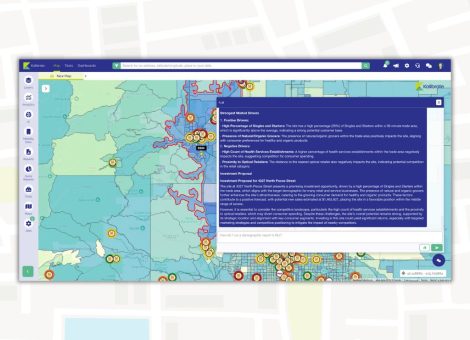To build or to buy
Whether to develop capabilities in-house or opt for a commercially available location intelligence solution is a question facing a range of organizations.
In our world, we often speak to multiple companies who recognize the need to have better quality data informing their commercial decisions, but aren’t sure whether to develop the capabilities themselves or engage Kalibrate to do the heavy-lifting for them.
What’s right in each scenario will depend on the needs and resources of the business, and the solutions available on the market. We have drawn on our experience of working alongside large organizations to provide a quick-fire overview of the pros and cons of each approach.
An internally developed, or in-house, solution involves developing or finding the various software and data components that you want in your system then connecting them together yourself. This could be done by your IT department or a third-party contractor. The concept is that you are building a system that has never existed before and are responsible for all connections between the various software and data components.

When organizations that have existing in-house systems contact Kalibrate, it is usually because their system has become out of date, full of band-aid patch fixes, or too difficult to manage. In our experience, two things not accounted for are the level of effort required to maintain such a system once it is built, and the staffing needs to fully support those internal tools for their users. As we all know, technology is always evolving, and people still change jobs. You need to make sure that you budget for constant system maintenance and support and have a contingency plan if your resources leave.
What is changing at an even faster pace than the underlying technology is data. In our space, there are always new, innovative data options becoming available. For example, massive mobile data and geosocial segmentation data are now widely available but would not have been a few years ago. When you build an in-house solution you also need to account for all the new data sources and how you are going to implement them in the system. At large companies, this can go well beyond programming and will require legal contracts and other levels of approval. In addition, whose job is it to constantly monitor new data options and test their validity? Failing to account for these things is often the downfall of in-house software.
Additionally, there are some solutions that involve a commercially licensed software tool suite, that then needs to be configured and built internally using data sources, system components, and even apps for field use and more. Most of these arrangements lean heavily on internal resources (or third-party) to build and then manage over time, and/or employ usage fees – credits or tokens that are used every time an action is taken, report is run, or data fields are accessed/updated. Ask the tough questions on usage and fees so you are not surprised with those added costs during the year. This can be difficult for budgeting, as usage costs are to be determined and more usage leads to more fees.
Commercially available software
A commercially available solution is a software system that can be purchase from a commercial vendor. The system vendor is responsible for all connections between the platforms and components. Configuration consists of choosing commercial and proprietary data to be included, deciding which functionality is going to be enabled, and determining what privileges each user will have. Some systems may also allow for modifications to look and feel.
Commercially available solutions can be up and running very quickly, have virtually no technology risk, and are much less expensive to implement since the computer software is already written and that initial build cost is amortized over many customers. A possible downside is that many are designed to do certain things and not others. If it doesn’t do something that you want it to do, you may or may not be able to work with the software vendor to add functionality – if your requirements are shared by many users, a good supplier should proactively address any capability blind spots.
Responsibility matrix
The following matrix outlines your responsibilities in a build vs buy scenario:

The above matrix is sourced from a third party but does a great job of summarizing what your responsibilities will be in both situations. Matrix source: www.cmu.edu/tcinc/students/course_documents/08/BuyBuild.pdf
The Bottom Line
There has been a lot of research performed regarding the tradeoffs of building vs buying a software solution. The bottom line is if a commercially available solution meets your needs and the vendor has a good track record of support you should choose it because it represents the cost-efficient and low risk option. Build-your-own solutions should be considered if there is no other way to get the functionality you need.
Kalibrate is a configured solution designed for retail-focused companies. It addresses many of the challenges that capturing and sharing retail market data, information, and knowledge present. It is currently deployed at numerous retailers, retail developer/investors, and retail brokers including some of the largest and most successful companies in the world.
Read more articles about:
Location intelligenceSubscribe and get the latest updates
You may unsubscribe from our mailing list at any time. To understand how and why we process your data, please see our Privacy & Cookies Policy
Related Posts
Location intelligence
Right-size your franchise territories: Maximize revenue per market
Franchise territory management tools are evolving changing with advances in location intelligence.

Location intelligence
AI in location intelligence: See it in action
See videos and screen captures of how AI has been integrated into the KLI platform.


